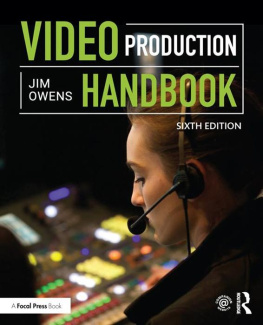Candace Owens
An Unauthorized Biography of the Conservative Thinker and Founder of Blexit
Candace Owens
An Unauthorized Biography of the Conservative Thinker and Founder of Blexit
Richard West
2020 by Richard West
The cover image is hosted at https://www.flickr.com/photos/22007612@N05/45715329164
and is made available under a Creative Commons 2.0 license (https://creativecommons.org/licenses/by-sa/2.0/). The creator, Gage Skidmore (https://www.flickr.com/photos/22007612@N05), has not endorsed this work.
Praise for Candace Owens
Candace Owens of Turning Point USA is having a big impact on politics in our Country. She represents an ever expanding group of very smart thinkers, and it is wonderful to watch and hear the dialogue going on...so good for our Country!
President Donald Trump
There are challenges within America, as well, and Ive often said we have to win the next generation. Thats why Im such a Candace Owens fan.
Vice President Mike Pence
I like the way Candace Owens thinks.
Kanye West
[Candace Owens is] one of the real freedom fighters out there.
Sebastian Gorka
Owens [is] a young and pretty and compelling black woman
Bret Easton Ellis
I had a very simple message Maybe not every single person in America is a racist.
- Candace Owens
Table of Contents
Contents
CHAPTER 1
Gifted
Today, we know Candace Owens as the leader of Blexit, a grassroots movement that encourages black Americans to leave the Democratic Party, with its failed racial policies, and assert their right to think for themselves. Owens made her own Blexit in 2016, after being betrayed by the liberal media, and she is the perfect person to explain why black Americans should flee the left.
Before she founded Blexit, though, Candace Owens fully experienced the Democratic vision of black life in America, beginning with a poor, inner-city childhood. Her mother had limited education and few opportunities, but she gave Candace two important gifts.
The first gift was her name. According to Candace, her mother resolved that her three daughters would not have names that preceded [their] character. She would not give her children stereotypical black names.
Instead of using identifiably black names, she gave her children names that said nothing about their race. Today, Candace describes her name as culturally ambiguous. On paper, Candace could be Asian, white, or any other race. Perhaps her mother was aware of the negative expectations that stereotypically cultural names can create.
In their 2005 book, Freakonomics: A Rogue Economist Explores the Hidden Side of Everything, Steven D. Levitt and Stephen J. Dubner demonstrated that black and white Americans tend to give their children different names. In a 2016 study, Harvard Business School professor Katherine A. DeCelles found that black job applicants who whitened their resumes by removing information that identified their race received more job interviews. The whitened resumes resulted in a 25% interview rate, compared to a 10% interview rate for non-whitened resumes.
Whatever the reason, the decision of Candaces mother to give her children racially neutral names started Candace off on the path toward thinking for herself. Her name would not cause her to be categorized based on her race. In time she would embrace the idea of escaping racial stereotypes about how she should act, think, and vote.
Candaces mother could not, however, give her a racially neutral childhood. Instead, that childhood featured every stereotypical aspect of inner-city, black American life. Candace faced significant obstacles in her early life, and she could not be characterized as privileged in any way.
When Candace was born on April 29, 1989, her family lived in low-income housing in downtown Stamford, Connecticut. The city had recently emerged from a difficult period of government corruption, during which high-ranking members of the police department ran a hugely successful drug ring. Other city departments also engaged in corruption, and the local governments failings made life difficult for poor families like Candaces.
For nearly two decades, developers had tried to remake the city of Stamford by removing complexes that housed poor residents. While some areas of the city benefited from new construction, poor residents had fewer options for housing as development squeezed them into a smaller geographic area.
In the book Stamford 76, JoeAnn Hart describes the largest inner-city housing complex as follows:
And then there were St. Johns Towers, low-income housing developments in the shape of three trash cans, where the old downtown residents (read: black residents) had been dumped. The towers themselves came into being as the result of a lawsuit in the early 70s that stopped Stamfords urban renewal because it had destroyed nine hundred downtown housing units without replacing a single one. [The F.D. Rich Company, an urban renewal developer working with the city,] fought the towers every inch of the way. Theres no profit in housing low-income families, but if [the company] wanted to continue the flow of federal money, [it] had to build them. They were, for a time, distinctive features of the city skyline.
The Owens family lived in a small, inner-city apartment. In the first few years of Candaces life, her familys home must have seemed utterly normal to her, because she knew nothing else. She shared a room with her two sisters and accepted that a weekly visit from the roach exterminator was part of normal apartment life. The apartment remained habitable, but only just.
This apartment lifestyle must have seemed normal to Candaces mother, as well. She had been raised mostly in group homes, like her eight siblings. She had never experienced the luxury of owning her own home or living in a well-furnished apartment.
Most of Candaces mothers siblings eventually spent time in prison. Candace recalls that visiting uncles in prison seemed ordinary to her when she was a child. Some of her cousins were convicts, as well. Instead of being distant problems, criminality and the resulting incarceration were ordinary parts of life for the Owens family.
Candaces father came from a more successful family, though. His parents lived in a nearby middle-class neighborhood and had worked hard to establish themselves financially. He, however, struggled in various ways. His relationship with Candaces mother was troubled; the two would soon separate, and eventually, when Candace was in her early 20s, they would formally divorce. Candace recalls that he also struggled with obesity, partly because of the familys poor diet, which consisted of frozen dinners most nights.
CHAPTER 2
Aspirations
Despite his upbringing, Candaces father could not provide his family with a comfortable lifestyle. While his parents lived in a tidy house in the suburbs, he could only give his family the bare essentials of subsidized housing.
Shortly after Candace began public school, she got a glimpse of what a more prosperous life could be. At age five, she became friends with a girl named Lindsay. At school, Candace did not pick up on the subtle clues that Lindsays lifestyle was different from her own; she was just happy to have a friend. Eventually, her new friend invited her for a playdate at her home.
Lindsays mother probably drove Candace to the home because Candaces mother did not own a car and did not know how to drive. As they drove out of the city and into the suburbs, a new world opened up for Candace. She recalls: I was shocked as we were driving that the houses just got bigger and bigger and bigger. I said, Oh, my goodness. Do people live like this?
Lindsays family inhabited a large, white, Victorian house. Among other things, it had a playroom filled with expensive toys, like glass dolls. The family also had a nanny. Candace had never imagined having these luxuries, and she was stunned to discover that her own friend enjoyed such lavish surroundings.
Next page

![Richard West - An Unauthorized Biography of Jeanine Pirro: The Renowned District Attorney and Television Legal Analyst [Pamphlet]](/uploads/posts/book/162706/thumbs/richard-west-an-unauthorized-biography-of-jeanine.jpg)









